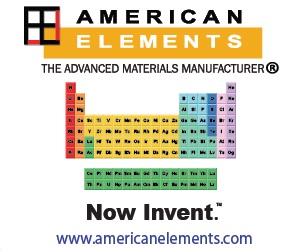
April 22 - 26, 2024
Seattle, Washington
May 7 - 9, 2024 (Virtual)
Symposium Supporters
2024 MRS Spring Meeting & Exhibit
EN09.05.07
References
[1] T. Cheng, H. Xiao, W. A. Goddard, J. Am. Chem. Soc., 138, 13802 (2016).
[2] T.-C. Chou, C.-C. Chang, H.-L. Yu, W.-Y. Yu, C.-L. Dong, J. Velasco-Vélez, C.-H. Chuang, L.-C. Chen, J.-F. Lee, J.-M. Chen, and H.-L. Wu, J. Am. Chem. Soc., 142, 2857 (2020).
[3] X. Mo, X. Gao, A. V. Gillado, H.-Y. Chen, Y. Chen, Z. Guo, H.-L. Wu, E. C. M. Tse, ACS Nano, 16 12202 (2022).
[4] K. B. Ibrahim, T. A. Shifa, M. Bordin, E. Moretti, H.-L. Wu, A. Vomiero, Small Methods, 2300348 (2023).
Vibrational Spectroscopy at Electrified Interfaces: Electrochemical CO2 Reduction Reaction
When and Where
Apr 24, 2024
10:30am - 11:00am
10:30am - 11:00am
Room 337, Level 3, Summit
Presenter(s)
Co-Author(s)
Heng-Liang Wu1,2
National Taiwan University1,National Synchrotron Radiation Research Center2
Abstract
Heng-Liang Wu1,2
National Taiwan University1,National Synchrotron Radiation Research Center2
The solid-liquid interfacial reactions play a crucial role in controlling the performance and stability of electrocatalysts1-4. In situ vibrational spectroscopy techniques such as Raman and surface-enhanced infrared absorption spectroscopy (SEIRAS) are the powerful tools for examining the surface-adsorbed intermediates on the solid-liquid interfaces. In this talk, we report on our use of in situ SEIRAS, Raman, and X-ray absorption spectroscopy to investigate the electrochemical CO2 reduction mechanism over the Cu-based electrocatalysts. The Cu-based electrodes with different oxidation states result in the formation of various CO intermediates such as COatop and CObridge. The co-existence of COatop and CObridge corresponds to the selectivity of CO2-to-C2H4 reaction. Also, the bimetallic electrocatalysts are developed for efficient CO2-to-HCOOH and CO2-to-CO conversion processes. We found that the surface-adsorbed COO species with different binding structures play crucial role in the reduction process. The electronic structures of Cu-based electrocatalysts are associated with the formation of surface-adsorbed intermediates and electrocatalytic properties. The formation of surface-adsorbed intermediates and reaction mechanism associated with CO2-to-HCOOH and CO2-to-CO reactions over the bimetallic electrocatalysts will be discussed in detail.References
[1] T. Cheng, H. Xiao, W. A. Goddard, J. Am. Chem. Soc., 138, 13802 (2016).
[2] T.-C. Chou, C.-C. Chang, H.-L. Yu, W.-Y. Yu, C.-L. Dong, J. Velasco-Vélez, C.-H. Chuang, L.-C. Chen, J.-F. Lee, J.-M. Chen, and H.-L. Wu, J. Am. Chem. Soc., 142, 2857 (2020).
[3] X. Mo, X. Gao, A. V. Gillado, H.-Y. Chen, Y. Chen, Z. Guo, H.-L. Wu, E. C. M. Tse, ACS Nano, 16 12202 (2022).
[4] K. B. Ibrahim, T. A. Shifa, M. Bordin, E. Moretti, H.-L. Wu, A. Vomiero, Small Methods, 2300348 (2023).
Keywords
extended x-ray absorption fine structure (EXAFS) | in situ | infrared (IR) spectroscopy
Symposium Organizers
Christopher Barile, University of Nevada, Reno
Nathalie Herlin-Boime, CEA Saclay
Michel Trudeau, Concordia University
Edmund Chun Ming Tse, University Hong Kong
Session Chairs
Michel Trudeau
Edmund Chun Ming Tse



















